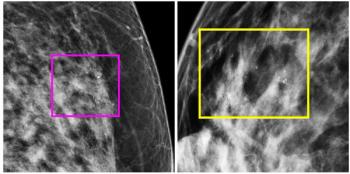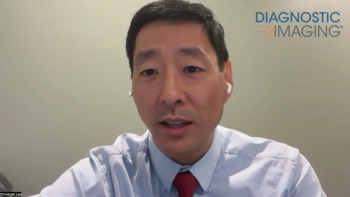
Digital Breast Tomosynthesis Reduces Recall Rates
Digital breast tomosynthesis for breast cancer screening reduces recall rates and biopsies, and detects more cancers.
Using digital breast tomosynthesis to screen for breast cancer significantly reduces recalls and increases detection rates, according to a study published in the
Researchers undertook an observational study to evaluate verified practice- and outcome-related databases to compute and compare recall, biopsy, and cancer detection rates, as well as positive predictive values for six radiologists who interpreted the images. The research was led by Stephen Rose, MD, president and founder of Rose Imaging and medical director of TOPS Comprehensive Breast Center in Houston, Texas, using Hologic’s 3D mammography system.
A total of 13,856 women received 2D screening mammography studies without tomosynthesis and 9,499 women had both 2D and 3D mammography.
Results showed that recall rates dropped when tomosynthesis was used among all six radiologists. The recall rate for mammography alone was 8.7 percent, but only 5.5 percent when tomosynthesis was added. PPV for recalls rose to 10.1 percent with tomosynthesis, compared with 4.7 without.
Other findings showed that the number of biopsies among women in the DBT group dropped to 13.5 biopsies per 1,000 screenings compared with 15.2 biopsies in the 2D-only group. Cancer detection was also better within the DBT group, which was 5.4 per 1,000 screenings compared to the other group’s 4.0 per 1,000. In addition, the invasive cancer detection rate increased from 2.8 to 4.3 per 1000 screening examinations. The positive predictive value for recalls increased from 4.7 percent to 10.1 percent.
The authors concluded that in terms of their practice, using breast tomosynthesis “was associated with a significant reduction in recall rates and a simultaneous increase in breast cancer detection rates.”
These findings were consistent with those of the
Newsletter
Stay at the forefront of radiology with the Diagnostic Imaging newsletter, delivering the latest news, clinical insights, and imaging advancements for today’s radiologists.




























